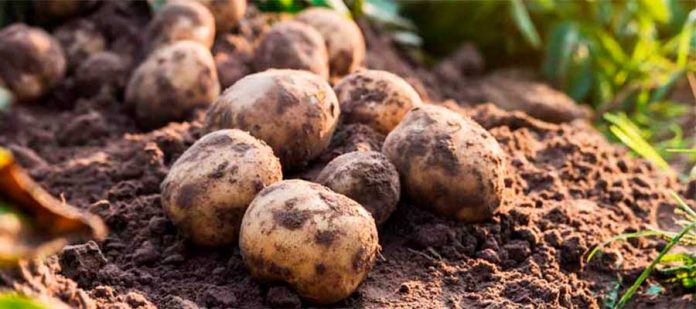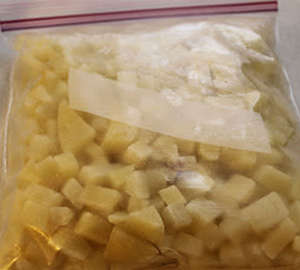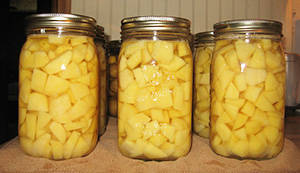Potatoes are often overlooked by preppers. And I really can’t understand why.
They are inexpensive, simple to store without energy, high in carbohydrates (exactly what you need in a crisis), and if you want to, you can make plenty of dishes like bread.
In addition, potatoes hold the distinction that they are one of the easiest and most prolific crops to grow. Not only do they develop well under a range of circumstances, and provide the opportunity to choose from a range of different rising outlets, but it is possible to have two harvests a year in certain climates. Potatoes will grow one of the best crops post apocalyptic.
If you are not in a position to cultivate your own potatoes and have either been blessed with green-thumbed friends’ bushels of spuds or find incredible sales on these starchy vegetables, you might always be in a pickle on what to do with more potatoes than you and your family will consume.
Certainly potatoes have a greater shelf-life than any other crops.
1. Extended Dry Storage – Root Cellars
Potatoes can be stored easily through the winter, making them a good source of protein when there isn’t much else available or growing. We have all seen our potatoes gradually rot or sprout in the oven, and what are the perfect strategies to extend your dry storage?
Your first move is to sort the potatoes out. You can NOT store any potatoes that have noticeable injury, like bruises or cracks on the flesh. Such potatoes can rot even quicker than others, which could transmit a rot or fungus to the rest of your potatoes. The failure of your whole potato shop would be extremely disheartening.
The right storage place is a vital part of ensuring your potatoes don’t rot. A root cellar, basement, or seldom opened cabinet in your kitchen will suffice. It’s important that your potatoes are not exposed to moisture and light.
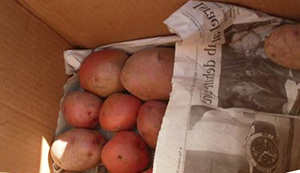

You don’t want to have the potatoes trapped in an airtight container because you want to hold out moisture and light. Good ventilation is important. Store them under any layer of potatoes in ventilated buckets, or even wicker baskets with a sheet of paper. Not only does the newspaper help hold the potatoes apart for proper aeration but it will also act to remove moisture in the air.
Your storage room will preferably be between 35 and 50 degrees Fahrenheit. Lower temperatures may alter the flavor of the potatoes, and higher temperatures will result in decay progression.
Test your daily spuds. Here are some indicators you might be mindful of the future issues.
- Withered skin
- Soft to the touch
- Green coloration
- Sprouting
- Mold
- Bad smell
Related: These 6 Backyard Plants Can Turn Into Bread
When it comes to potato preservation, one strategy in the prepper arsenal is to take the steps to treat the potatoes for long-term storage. This is a relatively easy procedure that requires a couple of weeks which should make sure you have potatoes that are much less vulnerable to rot.
Your potatoes spread out on a few layers of newspapers in a dark and cool area. Temperatures will vary from 50 to 60 degrees Fahrenheit. Keep the potatoes for just over two weeks unchanged. What this does is thicken up and dry the skins of the potatoes a litter better for extended storage.
Avoid washing your potatoes prior to storage, and make certain you don’t place them near fruits. Fruits emit a chemical called ethylene which may allow your potatoes to sprout.
2. Dehydrating Potatoes
We’ve all all loved a dinner of potatoes coming out of the box like dry white flakes. The potatoes reconstitute into mashed potatoes with a bit of water and milk that are far more common in appearance.
You should take action to flake or break the potatoes to dehydrate. As with both, the mechanism is quite close.
If you have a vegetable steamer and dehydrator, this should render the process extremely quick.
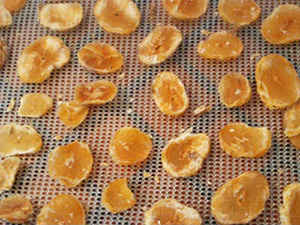

- Thoroughly wash and peel your potatoes. If you prefer to keep the potato peels on the spuds then you can do so
- Slice the potatoes evenly, using a mandolin slicer, so that they are 1/8” thick
- Layer your potatoes on the vegetable steamer and steam the slices for 5 minutes
- Move the potatoes to the trays of your dehydrator
- Set your dehydrator to 130 degree Fahrenheit, and dry the potatoes until they are thoroughly dried out
Once dried you can vacuum pack your potato slices or store them in airtight containers. To reconstitute them simply boil them until they are soft. You can also put a handful of the dried potatoes into a soup to simmer slowly with the rest of your ingredients.
Related: Make An Easy NO EGG Cornbread
Storing your potatoes as flakes will also allow you to create individual servings that could prove to be worth their weight in gold should you need to rely on them.
Storing your potatoes as flakes:
- Thoroughly wash and peel your potatoes
- Chop them up into cubes
- Place the cubed potatoes into a pot with just enough water to cover, and boil them over medium heat until they are soft
- Drain the water and mash them until they are smooth; be sure not to add any milk or butter, or even salt
- Layer your mashed potatoes out the trays of your dehydrator, lined with parchment paper
- Set your dehydrator to 140 degrees Fahrenheit dry for up to 8 hours, or until all the moisture has been removed from the potatoes
- Remove chunks of the dehydrated potatoes and pulse them in your blender until you get the desired size of flakes
- Store your potato flakes in airtight containers or jars until you need them. Properly stored, they’ll keep for up to a full year
Reconstitute them by adding boiling water, milk, butter, and other seasonings to taste.
3. Freezing Potatoes
Freezing is certainly one way to store your potatoes for later use, but it isn’t always the most realistic option for those who are worried about a lack of energy. It is necessary, as a prepper, to make the most realistic choices, choices which are similar to those currently living off the grid.
While a freezer is not an impossibility when you live off the grid, it is a massive vampire of energy and is not always ideal for storing food which can be stored using alternative methods.
You should peel and cube your potatoes to freeze, and then par-boil them so they’re not too firm for quick mashing. You can store your potato cubes in freezer bags until drained and cooled, or use a vacuum sealing system to store them in individual portions that can be used when needed.
4. Canning Potatoes
You probably think of that bumper crop of green beans or cooking up a batch of jam to preserve when you think of canning. Even potatoes can be canned and this serves as a good storage method; particularly if you lack dry storage space in your root cellar.
The method of canning potatoes is just as you canned for other products. You will peel and dice these to around 1⁄2″ cubes to prepare your potatoes. Boil the potatoes, but not too soft, until just done. Drain and then spoon into your prepared jars. Add a teaspoon of salt to quarter-sized pots, then cover with boiling fresh water. Seal the jars according to the standard methods.
Smaller potatoes can be packed whole in large pots. Simply open, heat up and enjoy yourself when you need them.
Sometimes the strong potato is underestimated and given a poor name because it is high in calories and carbohydrates. They are more than just the starchy beginning of fries though. The Irish Potato Famine, let us not forget. When it matters most they will keep you and your family alive.



